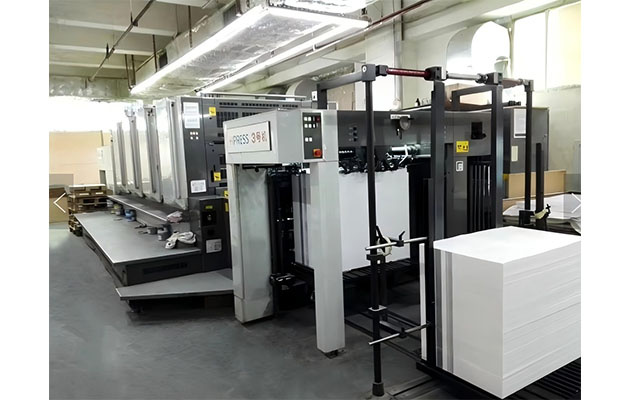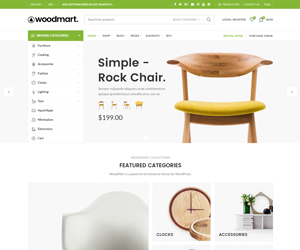how does 3d printing work

Decoding 3D Printers: How Does a 3D Printer Work and What Can It Do?
3D printers have rapidly evolved from a niche technology to a transformative force across various industries. But how does a 3d printer work, and what makes this technology so revolutionary? This article will explore the fascinating world of 3d print, delving into the mechanics of how 3d printers work, the different types of 3d printing processes, and the remarkable capabilities of 3d printing. We’ll also take a look at the different 3d printing technologies, and explore various examples of 3d printing that demonstrate its versatility. Whether you are new to this technology or a seasoned user, this comprehensive guide will enhance your understanding of 3d printing and its potential to reshape the world around us.
Article Outline:
- What is 3D Printing and How Does it Work?
- What are the Main Types of 3D Printing?
- How Does the Fused Deposition Modeling (FDM) 3D Printer Work?
- How Does Stereolithography (SLA) 3D Printing Work?
- What is Selective Laser Sintering (SLS) and How Does it Work?
- What Other 3D Printing Technologies Exist?
- What is the Role of 3D Printing Software?
- What are Some Practical Examples of 3D Printing?
- How is the 3D Printing Industry Evolving?
- What are the Advantages and Limitations of 3D Printing?
Article Content:
1. What is 3D Printing and How Does it Work?
3D printing, also known as additive manufacturing, is a process that creates three-dimensional objects by adding material layer by layer. Unlike traditional manufacturing methods that involve cutting or shaping material, 3d print builds objects from the ground up. The printing process starts with a 3d model, which is a digital representation of the desired object. This 3d model is created using computer-aided design (cad) software. This 3d model is then processed by another software that will prepare it for the 3d printer. The 3d printer will then create the object based on the instructions from the 3d model.
The basic principle behind how 3d printers work is relatively simple. The 3d printer will use the instructions from the 3d model to deposit material, layer by layer, until the three-dimensional object is formed. The material will be deposited based on the instructions from the 3d model and the type of 3d printer. For instance, some 3d printers use filament, which is melted and deposited through a nozzle. Other printers use resin, which is hardened using light. The process of depositing one layer at a time allows for the creation of complex geometries that would be impossible to achieve using traditional manufacturing methods.
2. What are the Main Types of 3D Printing?
There are several different types of 3d printing technologies, each with its own unique process and capabilities. The most common type of 3d printing is fused deposition modeling (fdm). FDM printers use a thermoplastic filament that is melted and extruded through a nozzle to build the 3d object layer by layer. Another popular type of 3d printing is stereolithography (sla), which uses a liquid resin that is hardened by a light source. This process is known for its high precision and smooth surface finish.
Another important form of 3d printing is selective laser sintering (sls). This method uses a laser to fuse powdered materials, such as metal powder or nylon, into a solid object. Each of these 3d printing techniques has its own advantages and limitations, and they are each suitable for different applications. The choice of which type of 3d printing to use depends on factors such as the desired material properties, the complexity of the 3d model, and the required precision. The different types of 3d printing technologies allow for a wide range of possibilities and can cater to different industries and needs.
3. How Does the Fused Deposition Modeling (FDM) 3D Printer Work?
Fused deposition modeling (fdm) is one of the most widely used 3d printing technologies. FDM printers work by feeding a thermoplastic filament from a spool through a heated nozzle. The nozzle melts the filament, which is then deposited onto a build platform layer by layer to create the 3d object. The printer uses the instructions provided by the 3d model to control the movement of the nozzle and the deposition of each layer of material. The printing process will continue until the entire object has been printed.
FDM printers are popular due to their relatively low cost, ease of use, and the wide range of available materials. The use 3d printers with FDM technology can create a variety of objects, from simple prototypes to complex parts with intricate geometries. One of the key advantages of fdm is its ability to use different types of filament, including pla, abs, and petg, each with its own unique properties. However, fdm printers typically have lower resolution compared to other 3d printing technologies like sla, which can result in a less smooth surface finish.
4. How Does Stereolithography (SLA) 3D Printing Work?
Stereolithography (sla) is another popular type of 3d printing that uses a liquid resin to create 3d objects. SLA printers work by using a light source, typically a laser or digital light projector, to harden the liquid resin layer by layer. The 3d printing process starts with a vat of liquid resin, and the build platform is lowered into the resin. The light source then selectively hardens the resin, one layer at a time, according to the instructions provided by the 3d model. After one layer is cured, the build platform moves up slightly, and the process is repeated for the next layer.
SLA 3d printing is known for its high precision and ability to produce objects with smooth surface finishes. This makes it ideal for creating detailed prototypes and parts with intricate features. SLA printers are often used in industries such as jewelry, dentistry, and medical devices, where high accuracy and fine details are crucial. However, sla printers and resins can be more expensive than fdm printers and filaments, and the printing process can be slower. Despite these limitations, sla remains a popular choice for applications that require high-quality 3d printed products.
5. What is Selective Laser Sintering (SLS) and How Does it Work?
Selective laser sintering (sls) is a 3d printing technology that uses a laser to fuse powdered materials into a solid object. SLS printers work by spreading a thin layer of powder, such as nylon or metal powder, onto a build platform. A laser then selectively sinters, or fuses, the powder particles together according to the 3d model. After one layer of powder is sintered, a new layer of powder is spread on top, and the process is repeated layer by layer until the entire object is formed.
SLS printing is known for its ability to create strong, durable parts with complex geometries. Unlike fdm and sla, sls does not require support structures, as the unfused powder acts as a support for the object during the printing process. This allows for the creation of intricate designs and complex internal structures that would be difficult to achieve with other 3d printing techniques. SLS is commonly used in industries such as aerospace, automotive, and medical devices, where high-strength, functional parts are needed.
6. What Other 3D Printing Technologies Exist?
In addition to fdm, sla, and sls, there are several other 3d printing technologies that cater to different needs and applications. Digital light processing (dlp) is similar to sla but uses a digital light projector instead of a laser to cure the liquid resin. This allows for faster print speeds, as an entire layer can be cured at once. Another technology is direct metal laser sintering (dmls), which uses a laser to fuse metal powder into solid metal parts. This method is used to create high-strength, durable metal components for industries such as aerospace and medical.
Other 3d printing technologies include material jetting, which uses inkjet print heads to deposit droplets of material onto a build platform, and binder jetting, which uses a liquid binding agent to join powder particles together. There is also continuous liquid interface production (clip), which uses a continuous process to rapidly cure resin, and multi jet fusion (mjf), which uses fusing and detailing agents to create parts from powder materials. These various 3d printing technologies offer a wide range of capabilities, from creating highly detailed prototypes to producing functional end-use parts.
7. What is the Role of 3D Printing Software?
3D printing software plays a crucial role in the 3d printing process, bridging the gap between the digital 3d model and the physical 3d printed object. The first step in the 3d printing process is to create a digital 3d model using computer-aided design (cad) software. This 3d model is then imported into a slicing software, which divides the model into thin, horizontal layers and generates the instructions for the 3d printer. The slicing software also allows the user to adjust various parameters, such as layer height, print speeds, and support structure settings.
Once the 3d model has been sliced, the instructions are sent to the 3d printer, which then builds the object layer by layer according to the generated path. Some 3d printers also have their own dedicated software that allows for printer control, monitoring, and maintenance. The 3d printing software is essential for ensuring that the 3d printer accurately produces the desired object with the specified properties. Advances in 3d printing software continue to improve the ease of use, efficiency, and capabilities of 3d printing.
8. What are Some Practical Examples of 3D Printing?
There are numerous practical examples of 3d printing across various industries, showcasing the versatility and capabilities of this technology. In the medical field, 3d printing is used to create custom prosthetics, implants, and surgical models. The ability to produce patient-specific devices has revolutionized healthcare, improving patient outcomes and quality of life. 3d printing is also used to create anatomical models for surgical planning and training, allowing surgeons to practice complex procedures before operating on a patient.
In the aerospace and automotive industries, 3d printing is used to create lightweight, high-strength parts and prototypes. This has led to significant advancements in design and production, enabling the creation of more efficient and innovative vehicles. Another exciting application is the use of 3d printing to build 3d printed houses, which can be constructed quickly and affordably. 3d printing is changing the way we design, manufacture, and interact with the world around us, and its potential applications are virtually limitless.
9. How is the 3D Printing Industry Evolving?
The 3d printing industry has grown exponentially in recent years and continues to evolve at a rapid pace. Advances in 3d printing technologies, materials, and software are driving innovation and expanding the capabilities of 3d printing. The affordability of 3d printing has also increased, making it more accessible to a wider range of users, from hobbyists to small businesses to large corporations. The use of 3d printing is becoming more widespread, with companies around the world are using 3d printers to create prototypes, spare parts, and end-use products.
One of the key trends in the 3d printing industry is the development of new materials with enhanced properties, such as increased strength, flexibility, and heat resistance. This is opening up new applications for 3d printing in industries such as aerospace, automotive, and medical. The 3d printing industry is also seeing a growing focus on sustainability, with the development of eco-friendly materials and recycling programs for 3d printed products. As the technology continues to mature, we can expect to see even more innovative uses for 3d printing in the years to come.
10. What are the Advantages and Limitations of 3D Printing?
3D printing offers numerous advantages over traditional manufacturing methods. One of the key benefits is the ability to create complex geometries and intricate designs that would be difficult or impossible to achieve with traditional methods. 3d printing also allows for rapid prototyping, enabling designers and engineers to quickly iterate and test their designs. This can significantly reduce development time and costs. Additionally, 3d printing enables on-demand production, reducing the need for large inventories and allowing for greater customization.
However, 3d printing also has its limitations. The printing process can be slow compared to traditional manufacturing methods, especially for large-scale production. The range of materials that can be used in 3d printing is also more limited, although it is continuously expanding. Additionally, the strength and durability of 3d printed objects may not always match those of traditionally manufactured parts, depending on the material and printing method used. Despite these limitations, the advantages of 3d printing often outweigh the drawbacks, making it a valuable tool in many industries.
Summary
- 3D printing, or additive manufacturing, creates three-dimensional objects by adding material layer by layer based on a digital 3d model.
- 3D printers work by depositing material according to instructions from sliced 3d models, using various methods like melting filament or hardening resin.
- The main types of 3d printing include fused deposition modeling (fdm), stereolithography (sla), and selective laser sintering (sls), each with unique processes and capabilities.
- FDM printers use a heated nozzle to extrude thermoplastic filament, while SLA printers use a light source to cure liquid resin, and SLS printers use a laser to fuse powdered materials.
- Other 3d printing technologies include digital light processing (dlp), direct metal laser sintering (dmls), material jetting, binder jetting, continuous liquid interface production (clip), and multi jet fusion (mjf).
- 3D printing software is crucial for creating, slicing, and preparing 3d models for printing, ensuring accurate production.
- Practical examples of 3d printing include custom prosthetics, implants, aerospace and automotive parts, and even 3d printed houses.
- The 3d printing industry is rapidly evolving, driven by advances in technology, materials, and software, as well as increased affordability.
- Advantages of 3d printing include the ability to create complex designs, rapid prototyping, on-demand production, and customization.
- Limitations of 3d printing include slower production speeds, a limited range of materials, and potential differences in strength and durability compared to traditionally manufactured parts.

















